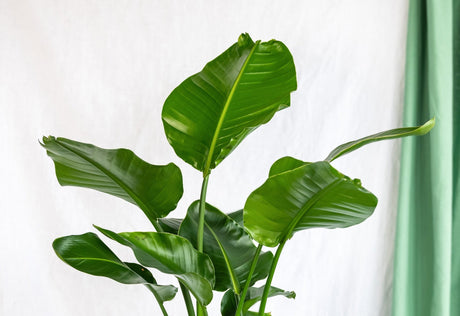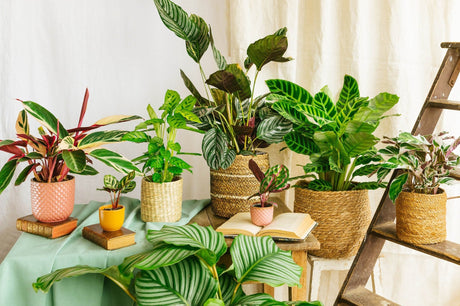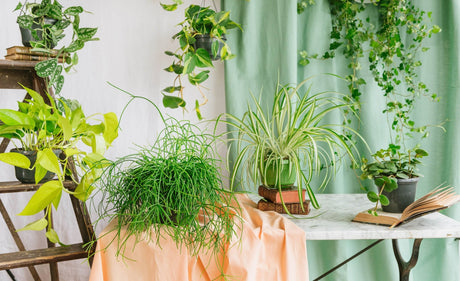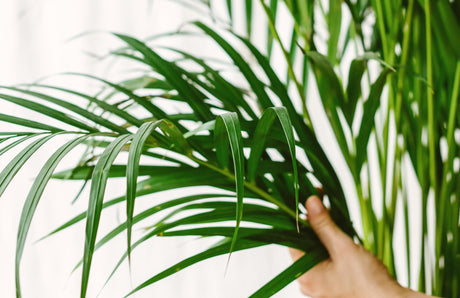Asplenium is a fern native to the tropical and subtropical regions of the world . Its fronds long and jagged look like a bird's nest, hence its nickname.
1. Watering an Asplenium
Asplenium enjoys constant humidity around its delicate fronds. However, it is important to find a balance to avoid excess water , which can lead to rot of the roots. Watch carefully the soil and leaves to determine when to water.The frequency of irrigation depends on several factors such as the temperature ambient , the humidity of the air and the size of the pot. In general, water your Asplenium when the layer upper of the soil is slightly dry. This can vary from a few days to a week, depending on conditions.
Tip: Insert your finger into the ground to a depth of approximately 2-3cm. If the soil is dry at this depth, it is usually time to water it.
2. Watering techniques
Watering at the base
Pour the water directly into the soil around the base of the plant. Avoid watering the leaves, as excessive moisture on the leaves can promote the development of fungal diseases.Deep watering
When watering, be sure to evenly saturate the entire soil in the pot. Water slowly until water begins to flow out of the drainage holes. This technique ensures a balanced hydration of the entire root system, thus promoting healthy growth.3. The exhibition of a Asplenium
The Asplenium thrives under bright indirect light. Avoid exposure to direct sunlight, as the intense rays can burn the leaves delicate plants. Place your Asplenium near a window, but make sure it is protected by a light veil to filter the light.windows facing east or west generally provide soft, indirect light , which is perfect for Asplenium. Avoid windows facing north, where the light is dim, or windows facing south, where the light direct can be too intense.
4. When should I repot my Asplenium?
Repotting Aspleniumis an important step to maintain its growth and health. Although doesn't require repotting frequent, there are times proper and signs indicators to watch.Repot your Asplenium every 2 to 3 years, usually in spring or in early summer, when the plant is in a period of active growth. Spring is a particularly favorable time, as the plant needs the extra energy provided by a new pot and a new substrate to sustain its growth. Here are the signs indicators of repotting:
Root crowding
If the roots of the Asplenium begin to protrude from the bottom of the pot or form a dense tangle, it's time to repot. Visible roots on the surface of the soil are an obvious sign.Slowed growth
If you find that your Asplenium is growing slower than usual, it may indicate that the nutrients in the soil are depleted. Repotting will provide it with a new, nutrient-rich substrate.Inefficient water flow
If water has trouble flowing properly through the pot when watering, it may signal soil compaction or an overgrown root. It can also lead to root rot.Substrate degradation
If the potting medium appears broken down, compacted, or no longer holds moisture well, it may be time to repot to provide the plant with a healthier growing environment.General appearance
If your Asplenium looks weakened, has yellowing leaves, wilted, or is shedding its fronds faster than usual, it may be the result of under-sizing the pot.5. What fertilizer should I use for my Asplenium?
Fertilizer plays an role essential in the nutrition and health of the Asplenium.By providing the nutrients needed, you encourage growth vigorous and leaves lush.It is recommended to use a fertilizer specially formulated for houseplants or for ferns when you fertilize your Asplenium.
Application frequency
During the period of active growth, which generally corresponds to spring and summer, you can fertilize your Asplenium every 4 to 6 weeks. During the fall and winter, when growth is slower, you can reduce the frequency to about every 6-8 weeks, or even suspend fertilizer altogether if the plant goes semi-dormant.Application
Before applying fertilizer, make sure the soil is moist but not soggy. If the soil is dry, lightly water your Asplenium before fertilising.Prepare the fertilizer solution following the dilution instructions on the package. Thoroughly mix the fertilizer in non-calcareous water at room temperature. Spray the fertilizer solution gently and evenly over the soil of the pot until water begins to flow out of the drainage holes. Avoid pouring directly on the leaves.6. How do I multiply my Asplenium?
The multiplication of the Asplenium can be accomplished by using two main methods: division clumps and spore germination.Dividing tufts
This method involves gently separating a clump of the parent plant into several distinct sections, each with roots and fronds. Each section is then planted individually in its own pot. It is a quick and direct method of getting new plants from a mature plant.Spore germination
Spores are tiny reproductive structures found on mature Asplenium leaves. To propagate the plant from spores, the spores are harvested and sown on a suitable substrate. They slowly grow into small green prothallus, which eventually give rise to new, small ferns. This method requires more time and care, but it allows new plants to be created from scratch.
7. Diseases of a Asplenium
Asplenium is generally a plant hardy, but it can be sensitive to some diseases and problems. Here are some of the common diseases and problems that can affect the Asplenium:
Poroot rot
An overabundance of moisture in the soil can lead to root rot, especially if drainage is poor. Signs include wilting fronds, yellowing or browning of leaves, and stunted growth.Oidium
Powdery mildew is a fungus that can appear as a white powder on the leaves of Asplenium. It can damage tissues and affect plant growth.Black spots
Black spots on leaves can be caused by fungi or bacteria. They can develop in response to wet conditions and can cause leaf discoloration and deterioration.Pests
Although less common, Asplenium can be infested with insect pests such as scale insects or whiteflies. These pests feed on the leaves of the plant and can weaken its health.Yellow leaves
Overwatering, improper watering, or excessively humid conditions can lead to yellow or wilted leaves. It is important to monitor and regulate the watering to avoid this situation.Brown border
Brown or dry leaf tips can be caused by excessively dry air or drafts. Using a humidifier or strategically placing the plant can help prevent this problem.8. Delivery and receipt of your plant
- Your plant is dry
- Is your plant wet ? Let the potting soil dry.
- Should I repot my plant right away ? No ! Wait until next spring or for signs that your plant needs repotting.






